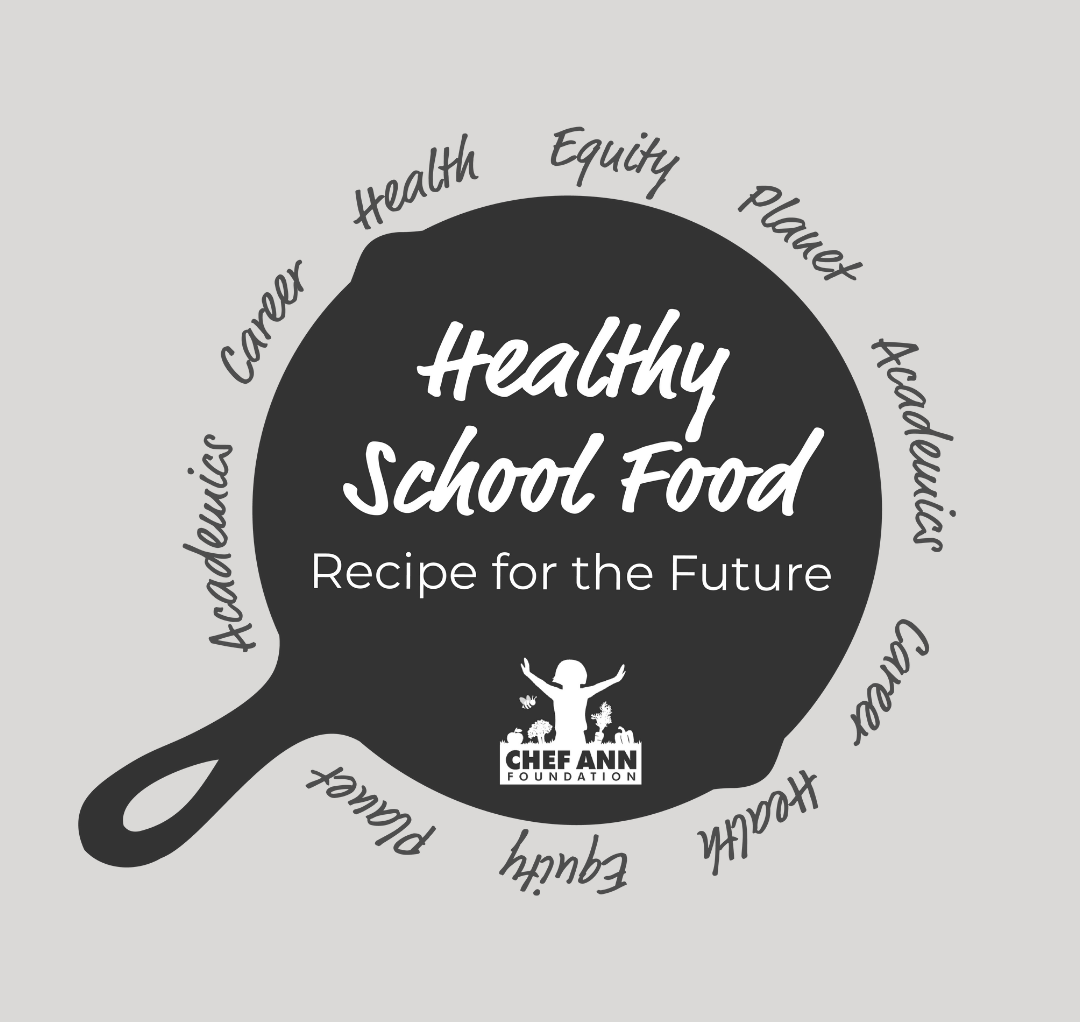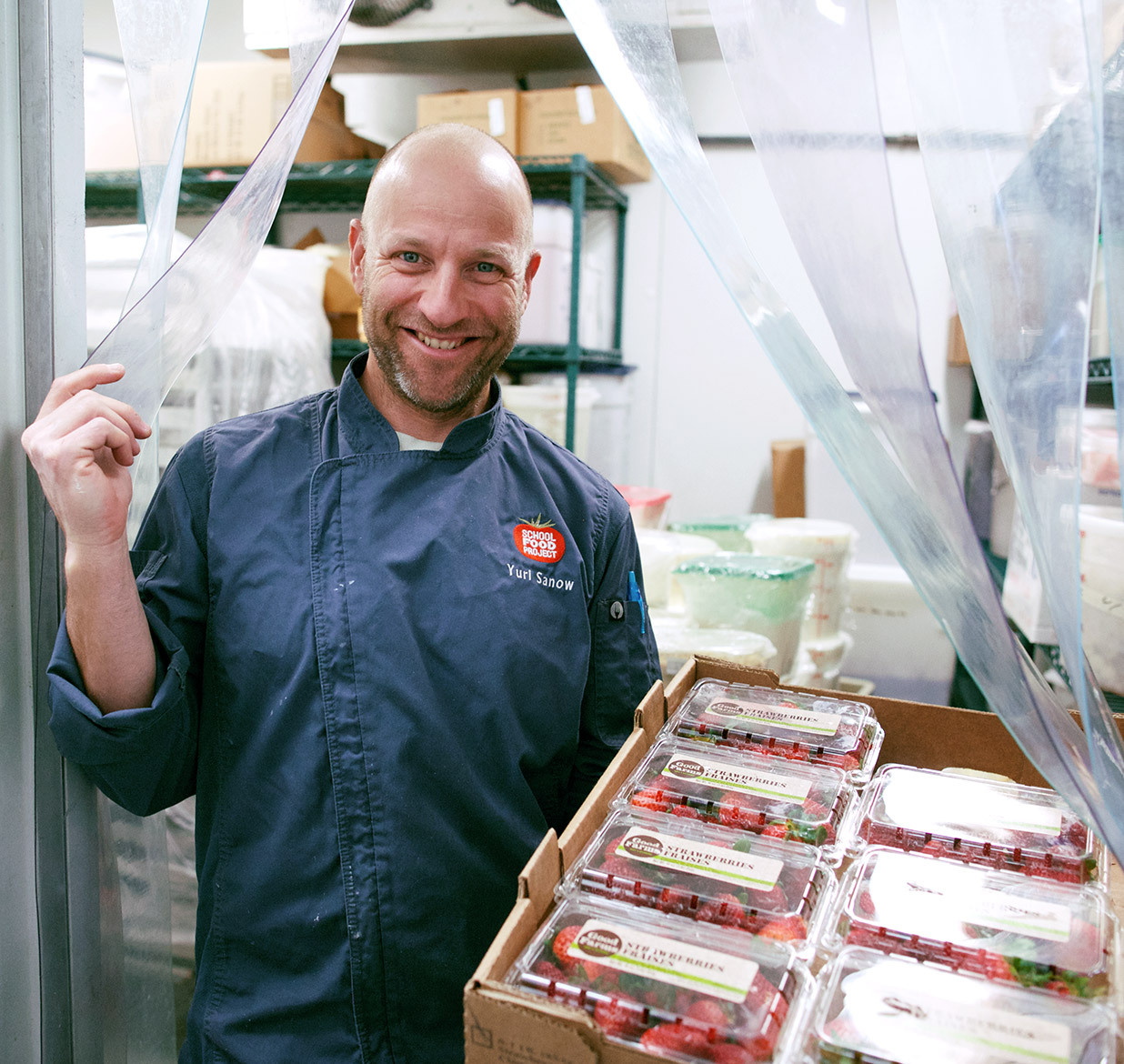
Healthy School Food: Recipe for the Future
How healthy school food links to career opportunities, planetary and student health, academic success, and equity.
October 11, 2021 | By Allison Madden
As we head into National School Lunch Week 2021, school food professionals are facing difficulties like never before. Challenges with supply chain interruptions and labor shortages have made it extremely difficult to serve students fresh and nutritious meals. However, we cannot lose sight of the many years of healthy school food momentum - and how healthy food can create tangible and long-term change.
Healthy school food can be a solution to various issues that exist within America’s school system and far beyond.
The COVID-19 pandemic has only further exacerbated issues of racial equity and justice, the U.S. workforce, student academics and health, and environmental challenges. In fact, the pandemic is now tied to an “alarming” increase in obesity in US children and teenagers. This data unfortunately continues the trend of the past several decades: processed and unhealthy food has led to higher obesity rates and diet-related conditions in children and teenagers — disproportionately affecting students of color.
Scratch cooking has always been at the center of the Chef Ann Foundation’s work; although scratch cooking may be a difficult feat right now, we hope that once districts regain capacity and bandwidth, our resources and core programs can serve as helpful tools on the path to healthier school food.
With over 30 million children participating in the National School Lunch Program, we have an enormous opportunity to positively change the health of future generations, as well as move the needle in large societal issues. Here’s how healthy school meals can be a successful recipe for the future:
Chef Ann’s Vision

Fostering Academic Success
It’s no secret that healthy, whole foods have a positive impact on children’s overall academic performance. In schools, eating nutritious meals cooked from scratch has been shown to improve student attendance and participation, as well as raise test scores and grades. Research also shows that well-nourished children are less frequently tardy or absent, have fewer behavioral problems, have increased school engagement, and participate in class at a higher rate than under-nourished children.

Fostering Academic Success
It’s no secret that healthy, whole foods have a positive impact on children’s overall academic performance. In schools, eating nutritious meals cooked from scratch has been shown to improve student attendance and participation, as well as raise test scores and grades. Research also shows that well-nourished children are less frequently tardy or absent, have fewer behavioral problems, have increased school engagement, and participate in class at a higher rate than under-nourished children.
This 2017 school lunch study found that better-quality diets are linked to improved cognitive function, longer attention spans, and increased work capacity — particularly for low-income students. Serving highly nutritious, scratch-cooked meals in schools is an extremely effective way to improve student learning.
Fueling Student Health
A recent Universal School Meals issue brief from the Colorado Food Systems Advisory Council found that healthy school meals has been shown to “improve student eating behaviors and introduce students to new, healthful foods.” Serving scratch-cooked meals also improves student nutrition by reducing (and in many cases eliminating) foods that are high in added sugars, saturated fats, and sodium. By increasing the amount of fresh fruits and vegetables that students consume at school, their health improves over time, along with academic performance.
Creating Career Opportunities
Healthier school meals offer a viable career opportunity for culinary students outside of the typical restaurant industry. K-12 food service employment often includes salary opportunities, state-provided benefits, and long-term security. To demonstrate and support the overall professional development of school food service workers, the Chef Ann Foundation is launching a pilot program with California community colleges to provide work-based learning opportunities for students to apply their knowledge in K-12 school districts prioritizing scratch cooking.


Creating Career Opportunities
Healthier school meals offer a viable career opportunity for culinary students outside of the typical restaurant industry. K-12 food service employment often includes salary opportunities, state-provided benefits, and long-term security. To demonstrate and support the overall professional development of school food service workers, the Chef Ann Foundation is launching a pilot program with California community colleges to provide work-based learning opportunities for students to apply their knowledge in K-12 school districts prioritizing scratch cooking.
This is a unique opportunity to create long-term change in school food by preparing the next generation with the skills and knowledge to operate fresh, healthy, and sustainable school meal programs. For community colleges, this project generates new mission-driven career pathways for culinary-minded students, at a time when culinary careers are severely limited by the pandemic. Healthier school meals can be a culinary- and hospitality-focused career that makes a difference in children’s lives.
Cooking for a Healthier Planet
By including healthier menu items that involve cooking from scratch, school food teams have an opportunity to plan their menus in advance and think carefully about ingredient and meal choice. This can involve taste testing to ensure that menu items are well received, as well as the freedom and possibility of incorporating plant-forward meals. Plant-forward foods, as defined by Friends of the Earth (FOE), swap out some meat for plant-based foods, resulting in plant-focused, lower-meat recipes, such as bean and turkey chili and mushroom-beef burgers.
In a 2018 report, FOE found that a California school district, which reshaped its menu with fewer animal proteins and more protein-rich legumes and vegetables, saved about 42 million gallons of water and saw a 14% reduction in their carbon footprint. Researchers also found that scratch cooking allows schools to operate on “equivalent or reduced production costs” and reduce food waste. Scratch cooking means that food service workers can serve healthier meals to students with a reduced environmental impact.

Feeding Equity
Urban youth of color have disproportionately higher rates of skipping breakfast, most often because of limited economic resources and neighborhood food insecurity. Subsequently, deficits in food and nutrition access are linked to learning gaps, lower grades, and increased rates of repeating a grade: “overcoming systemic inequities in school meal accessibility is a vitally important step towards ensuring all students can obtain the food and nutrition they need to thrive.” In the U.S, racial inequity is a constant predictor of food insecurity; Hispanic and Black households are twice as likely to experience food insecurity than White households, and one in four American Indian/Alaska Native families have been consistently food insecure at double the rates of their white counterparts.

Feeding Equity
Urban youth of color have disproportionately higher rates of skipping breakfast, most often because of limited economic resources and neighborhood food insecurity. Subsequently, deficits in food and nutrition access are linked to learning gaps, lower grades, and increased rates of repeating a grade: “overcoming systemic inequities in school meal accessibility is a vitally important step towards ensuring all students can obtain the food and nutrition they need to thrive.” In the U.S, racial inequity is a constant predictor of food insecurity; Hispanic and Black households are twice as likely to experience food insecurity than White households, and one in four American Indian/Alaska Native families have been consistently food insecure at double the rates of their white counterparts.
Healthy, scratch-cooked school food poses a possible solution to these inequities, especially when paired with universal free school meals (aka Healthy School Meals for All) or Community Eligibility Provision (CEP). As the second largest food relief program in the country, the National School Lunch Program (NSLP) provides a unique opportunity to serve healthy meals to students of all races and backgrounds. By adopting a scratch-cook meal program, school districts can offer every student equal access to healthy and nutritious meals made with real ingredients — and the benefits that come with it.
Recipe for the Future
School food is so much more than filling bellies. It is an incredible opportunity for so many current challenges: academics, health, career, environment, and equity. In the current state of the world and our country, healthy school food is a multifaceted solution that can directly benefit the current and future generations. As Chef Ann says, by cooking school meals from scratch, “we’re changing kids’ palettes, we’re changing how kids think about food, and we’re changing the food they want to eat. And that can save their lives and change the world.”
Healthy school food holds a recipe for the future: the ability to fuel positive change.







